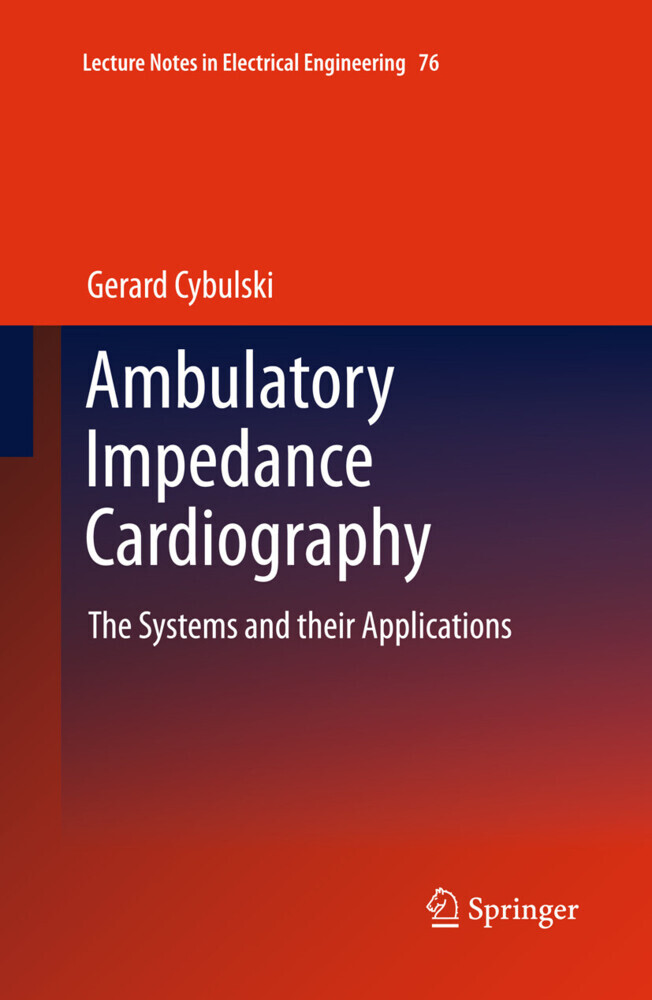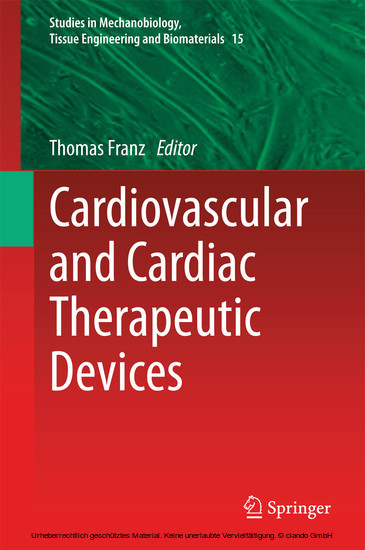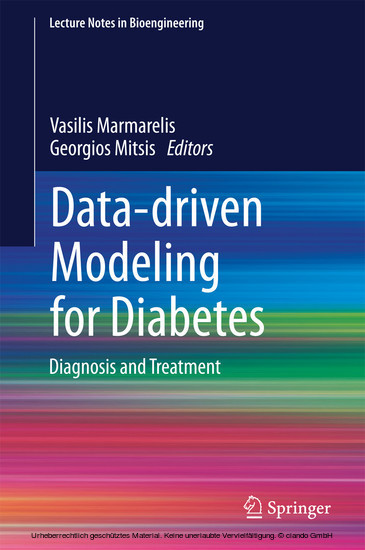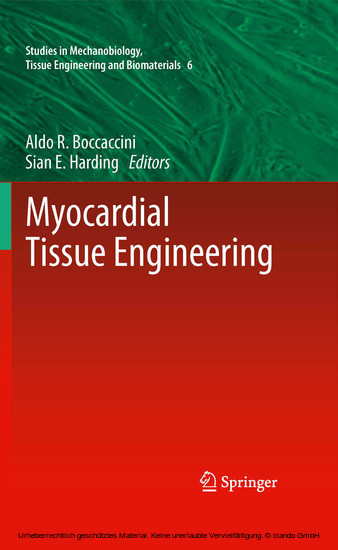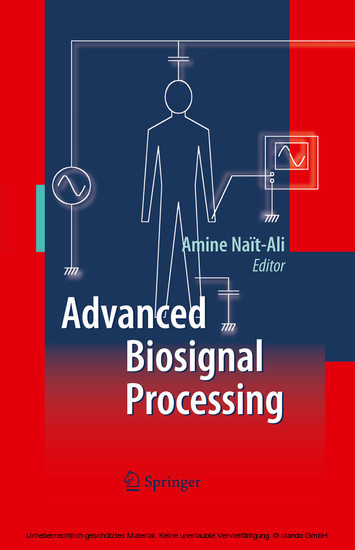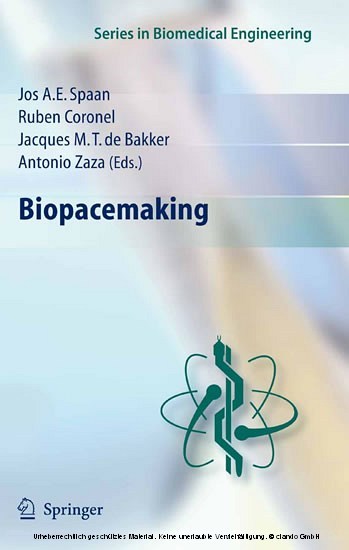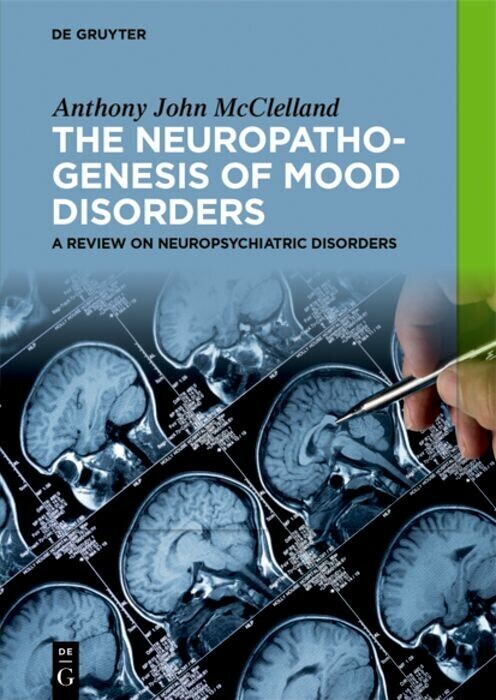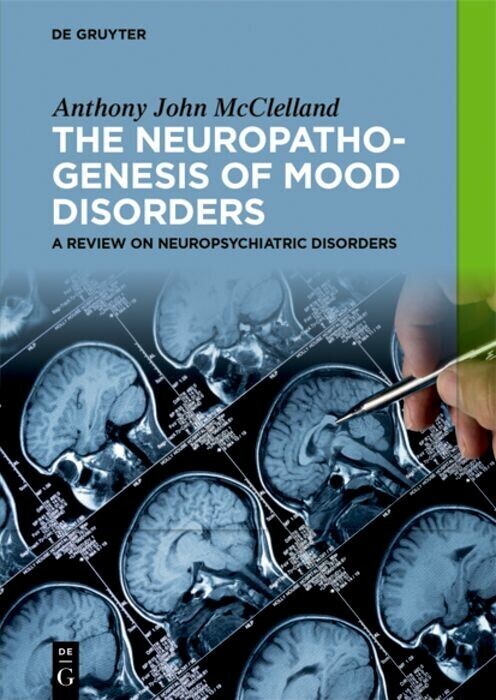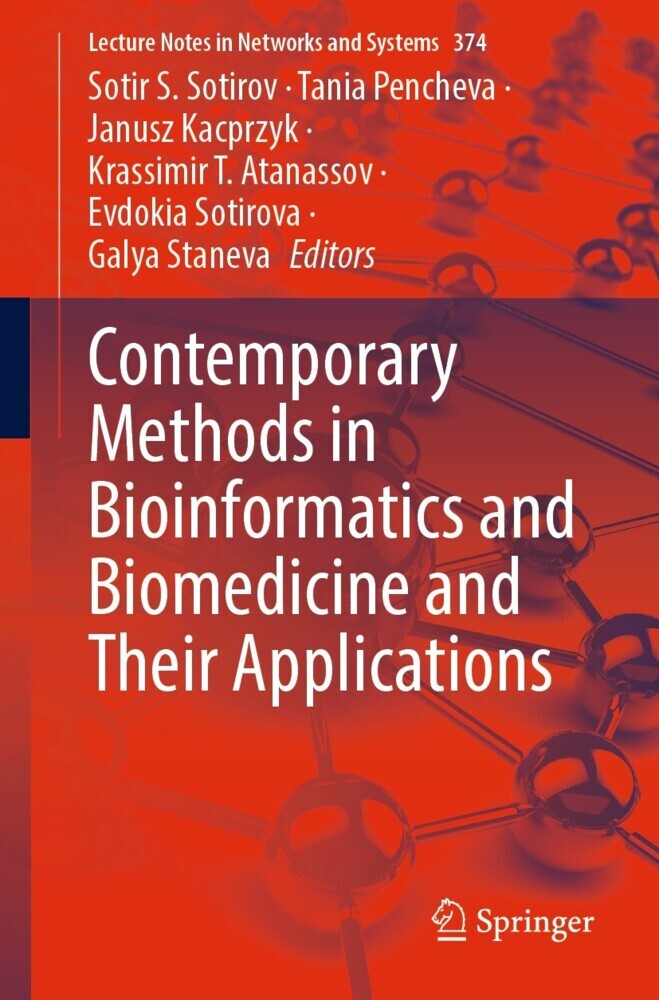Ambulatory Impedance Cardiography
The Systems and their Applications
The book is divided in 4 parts. In the first one, the importance of the analysis of the cardiac dynamics using the ambulatory monitoring technique is presented. The second part contains the description of foundations of impedance cardiography (ICG), the models used to describe the ICG technique and the description of available systems for ambulatory monitoring of cardiac hemodynamics. The third part is devoted to the validation of the ambulatory ICG method, the verification of the quality of long term ICG recordings and the discussion of the limitations of this technique. In the last part, some clinical and research applications of the ICG ambulatory monitoring are presented. The simultaneous recordings of electrocardiogram (ECG) and ICG in the transient cardiac arrhythmia events illustrate the potential applications of that method for quantitative analysis of hemodynamics when the implementation of the stationary methods would be either difficult or not possible to do. The book is followed by references, alphabetical index and appendices containing the technical data of the available systems for portable monitoring of cardiac hemodynamics.
1;Ambulatory ImpedanceCardiography;2 1.1;Preface;5 1.2;Contents;7 1.3;List of Abbreviations;10 1.4;1 Introduction;12 1.4.1;1.1...The Importance of Monitoring Transient Changes;12 1.4.2;1.2...Non-invasive Recording of the Cardiac Parameters and its Significance;13 1.4.3;1.3...Ambulatory Monitoring and Implementations of it;13 1.4.4;1.4...Ambulatory Monitoring Using Impedance Cardiography Signals;14 1.4.5;References;15 1.5;2 Impedance Cardiography;17 1.5.1;2.1...Bioimpedance Measurement: Applications and Importance;17 1.5.2;2.2...Electrical Properties of the Biological Tissues;18 1.5.3;2.3...Tissue as a Conductor;19 1.5.4;2.4...Frequency and Current Values;20 1.5.5;2.5...Bioimpedance Measurement Methods;21 1.5.5.1;2.5.1 Biopolar and Tetrapolar Method;21 1.5.5.2;2.5.2 Alternating Constant-Current Source;21 1.5.5.3;2.5.3 Receiving Unit;22 1.5.5.4;2.5.4 Demodulation Unit;22 1.5.5.5;2.5.5 Automatic Balance Systems;23 1.5.6;2.6...Electrodes Types and Topography;23 1.5.6.1;2.6.1 Band Electrodes, Spot Electrodes and Mixed Spot/Band Electrodes;23 1.5.6.2;2.6.2 Other Solutions;24 1.5.7;2.7...Signal Description and Analysis;25 1.5.7.1;2.7.1 Impedance Cardiography Traces;25 1.5.7.2;2.7.2 Characteristic Points on Impedance Cardiography Curves;25 1.5.7.3;2.7.3 Characteristic Periods in Impedance Cardiography;27 1.5.7.4;2.7.4 Hemodynamic Indices;28 1.5.7.5;2.7.5 The Influence of Breathing;30 1.5.7.6;2.7.6 The Origin of the Impedance Cardiography Signals;31 1.5.7.7;2.7.7 The Methods of Stroke Volume Calculation;33 1.5.7.7.1;Nyboer Formula;33 1.5.7.7.2;Kubicek Formula;34 1.5.7.7.3;Sramek Formula;34 1.5.7.7.4;Sramek-Bernstein Formula;35 1.5.7.7.5;TaskForce Monitor Method;36 1.5.7.7.6;PhysioFlow Method;36 1.5.7.8;2.7.8 Blood Resistivity Impact;38 1.5.8;2.8...Signal Conditioning;38 1.5.8.1;2.8.1 Ensemble Averaging Method;39 1.5.8.2;2.8.2 Large-Scale Ensemble Averaging Method;40 1.5.9;2.9...Technical Aspects of ICG-Limitations, Errors and Patients' Safety;40 1.5.10;2.10...Modifications of ICG, and Other Impedance Techniques;41 1.5.11;2.11...Physiological and Clinical Applications of Impedance Cardiography;41 1.5.12;2.12...Conclusions;42 1.5.13;References;43 1.6;3 Ambulatory Impedance Cardiography;48 1.6.1;3.1...The Idea of Ambulatory Impedance Cardiography;48 1.6.2;3.2...ReoMonitor: The Research System;49 1.6.2.1;3.2.1 The Ambulatory Recorder;50 1.6.2.2;3.2.2 The Analogue Unit;50 1.6.2.3;3.2.3 The Digital Unit;52 1.6.2.4;3.2.4 The User Interface;53 1.6.2.5;3.2.5 Software for Hemodynamics Parameters Calculations;54 1.6.3;3.3...VU-AMS: The Vrije Universiteit Ambulatory Monitoring System;56 1.6.4;3.4...MW1000A: The MindWare System;58 1.6.5;3.5...PhysioFlow Enduro System;58 1.6.6;3.6...AIM-8-V3: Wearable Cardiac Performance Monitor;60 1.6.7;3.7...Ambulatory Impedance Cardiograph: AZCG;62 1.6.8;3.8...Other Systems;63 1.6.9;References;64 1.7;4 Validation of the Ambulatory Impedance Cardiography Method;66 1.7.1;4.1...Introduction;66 1.7.2;4.2...Validation using Reference Methods;67 1.7.2.1;4.2.1 Background and Motivation;67 1.7.2.2;4.2.2 Experimental Studies;68 1.7.2.3;4.2.3 Results of the Own Experimental Studies;69 1.7.2.3.1;Stroke Volume;69 1.7.2.3.2;Ejection Time;70 1.7.2.3.3;Pre-ejection Period;72 1.7.2.4;4.2.4 Discussion and Conclusions;72 1.7.3;4.3...The Quality of the Ambulatory Impedance Cardiography Recordings;73 1.7.3.1;4.3.1 Background and Motivation;73 1.7.3.2;4.3.2 Experimental Studies;74 1.7.3.3;4.3.3 Results of the Experimental Studies;75 1.7.3.4;4.3.4 Discussion and Conclusions;76 1.7.4;References;78 1.8;5 Clinical and Physiological Applications of Impedance Cardiography Ambulatory Monitoring;81 1.8.1;5.1...Introduction;81 1.8.2;5.2...Atrial Fibrillation;82 1.8.3;5.3...Ventricular Extrasystole Beats (VEB) Monitoring;86 1.8.4;5.4...Ambulatory ICG and Pacemaker Monitoring;90 1.8.4.1;5.4.1 Cardiac Pacing Optimisation;90 1.8.4.2;5.4.2 Pacemaker Syndrome Detection;92 1.8.5;5.5...Cardiac Parameters Monitoring During the Tilt Test;94 1.8.6;5.6..
Cybulski, Gerard
| ISBN | 9783642119873 |
|---|---|
| Artikelnummer | 9783642119873 |
| Medientyp | E-Book - PDF |
| Auflage | 2. Aufl. |
| Copyrightjahr | 2011 |
| Verlag | Springer-Verlag |
| Umfang | 114 Seiten |
| Sprache | Englisch |
| Kopierschutz | Digitales Wasserzeichen |

